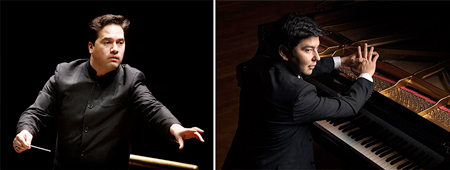by Robert Rollin

Abduraimov scintillated with energy from the powerful opening chords, playing with flawless technique and remarkably poised expression. The first movement, longer than the other two combined, featured wonderful exchanges between Abduraimov and solo clarinet, the woodwind section, principal horn, and the strings. Trevino controlled the flow masterfully.
Tchaikovsky usually reserves the brass for climactic tutti passages. Here, he introduces the full section in the closing theme, and the trombones led with vigor. The Orchestra answered Abduraimov’s brilliant octaves with growling low notes in brasses, cellos and double basses. The final extended piano cadenza was a tour de force.
The Andante opened more delicately with a beautiful flute solo answered gracefully by the piano and accompanied with delicate pizzicatos. The Prestissimo middle section sparkled with syncopated piano pyrotechnics, melodic lines in the cello section, and a fine piano cadenza.
In the first theme of the finale, Abduraimov and the Orchestra sparkled with incisive off-beat accents, and maintained a sense of animation in the more lyrical second theme. The pianist reserved his most powerful sound for the fortissimos that close the Concerto, and the audience reacted with a standing ovation.
Trevino returned after intermission to conduct a fine performance of the Fifth Symphony, beginning with the work’s unifying element, the theme depicting fate, first introduced expressively in the low register of the clarinets.
The bassoon’s haunting tune at the beginning of the fast section, exchanges between violins and violas, further wind solos, and forceful horn passages all contributed to a magnificent performance.
The principal horn introduced one of the great Romantic themes, the stunningly beautiful Andante cantabile melody, and solos in bassoon, horn, and oboe added luster to the second movement. An intensely passionate full orchestral outburst reintroduced the fate theme, subsiding into a softly lyric clarinet solo.
In the third movement the carefree waltz theme, presented by solo winds and supported by string pizzicatos, led to a darker moment when the fate theme reappeared, first in the bassoon, then later in a spirited full statement.
The fate theme returned to open the fervent Andante the begins the finale. Following an eloquently wistful flute solo, the strident brass-dominated Vivace drove the work to a striking close.
Published on ClevelandClassical.com August 22, 2017.
Click here for a printable copy of this article



